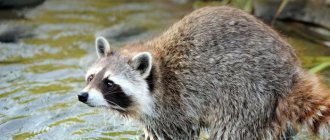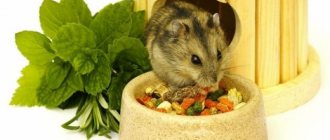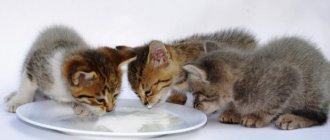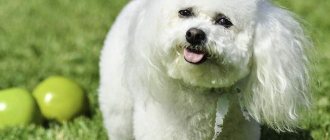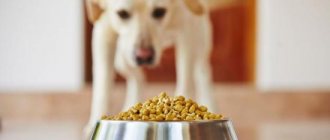11 minutes to read the article
PhotoVideoComments
Ducks eat almost anything humans feed them. Not all of this food is beneficial to the bird’s body, and some cause significant harm to its health. If a person is guided solely by good intentions and wants to help his feathered friends survive, then he definitely needs to know what to feed ducks. Otherwise, instead of good, it is easy to destroy birds.
Before feeding, you need to learn about the effects of various foods.
Useful and harmful products
Adults and children, walking through the park, love to feed the ducks on the pond. They find this activity exciting and useful. They say that man saves his little brothers from starvation. Not everyone knows that there are products that harm the body of birds.
The food must be balanced, with sufficient protein content. It is not necessary to choose proteins of plant origin; animal proteins are also suitable. You should also make sure you have a large amount of vitamins and microelements. Among the latter it is necessary to highlight:
- copper;
- calcium;
- magnesium.
Feeding bread
Often wild and domestic ducks are fed with bread. But it’s completely in vain (this also applies to bakery products). Nowadays you won’t surprise anyone with the lack of benefits for the human body, and even more so for birds. Other products are not capable of causing as much harm to birds as bread.
If you have to feed the ducks with bread, for this purpose you should use soaked crackers added to the cereal gruel. Explained by four main factors.
- Under natural conditions, there is no food that even remotely resembles baked goods. Birds' bodies are simply not equipped to digest it.
- When eating bread in large quantities, ducks experience blockage of the esophagus, leading to death.
- Due to the abundance of carbohydrates in bread, the bird begins to quickly gain weight. For domestic ducks this is a positive thing, but for wild ducks it often leads to death.
- Mold appears in stale bread. Eating such food can lead to the development of a dangerous disease - aspergillosis. The affected bird has less than a week to live and there is no chance of saving it. The disease is dangerous with the risk of affecting the entire livestock.
Feeding birds bread can lead to a dangerous disease
Is it possible to feed wild ducks bread?
Increasingly, migratory birds spend the winter in the same city ponds where they spend the summer. This is partly due to the fact that winters have become warmer and the duck ponds in the park practically do not freeze. But much more often, wild ducks stay in the city for the winter due to the availability of food.
They get used to receiving food from people who actively feed supposedly starving birds. Indeed, ducks greedily rush for every piece of bread and even fight over food. But this instinctive behavior is formed during the nestling age, when the survival of ducklings directly depends on the ability to compete. In summer, there is enough food for birds even in a relatively clean city pond. If necessary, the bird would fly to abundant feeding grounds.
For their own entertainment, vacationers throw pieces of bread, pies or rolls to the waterfowl. Ducks react with interest to a new object, tasting it. Having discovered that it is edible, they actively eat the offered food, which they do not need to obtain on their own. People interpret the birds' attention to the piece that has fallen into the water as a sign of hunger and begin to purposefully feed them.
Feeding ducks bread
But the mass, containing a minimum of fiber, fat, yeast and a large amount of salt, is very poorly digested by the duck stomach. Bread swollen in the digestive system is practically not processed by the gastrointestinal tract and is excreted very slowly, interfering with the normal nutrition of ducks. Rye varieties of bread (Borodinsky, Podovsky, Poltava, etc.) pose a real danger to duck health. By causing fermentation processes in the intestines, this food poisons the body.
But the worst consequence of feeding wild birds is their reluctance to fly away for the winter from places where food can be obtained at any time and without difficulty. In the wild, the signal for the start of migration is not only the length of daylight hours, but also a decrease in the amount of available food. On a pond within the city, where vacationers feed ducks until winter, the birds do not feel the need to migrate.
When cold weather sets in, when there are fewer feeders and the coastal zone of the pond is covered with ice, the ducks can no longer fly anywhere. While exploring the surrounding areas, they do not find conditions acceptable for existence and return to their pond. When severe frosts occur, some birds die, freezing into the ice or becoming prey to stray dogs. And even in warm winters, they can begin to really starve, unable to get food in shallow water near the shore.
Bird test in winter
Feeding at the city pond and in the park
What should you do if you want to please yourself and your children by treating the birds on the pond? What products to choose that will not harm the birds? You should definitely give up products with a high fat content. It is better to choose the following:
- grated cheese;
- bananas, apples, strawberries (other soft fruits are allowed);
- oatmeal in any form.
The presented list provides the bird with the necessary nutrients.
There is food that has no effect on the body at all. It brings neither benefit nor harm. This should include:
- potatoes;
- cabbage;
- worms;
- small fish.
There is no need to feed ducks on city ponds too often. It should be remembered that they are migratory, and fed individuals can remain for the winter. But in severe frosts it will be difficult for them to survive without human help.
What types of food are suitable for wild animals?
What to feed wild ducks is useful to know for those who at least sometimes feed them. It is optimal to use food of grain origin or made from legumes. A special compound feed would also be a good option.
It should be remembered that wild ducks should not be given the same type of food. It should be changed periodically, or even better, mixed. Combined food is ideal for birds.
Cereals are excellent food for ducks
Excellent food for wild ducks include:
- barley;
- oats;
- wheat;
- corn;
- peas.
The share of barley in the feed mixture must certainly be 30-35%. The composition and ratio of other components changes at your discretion.
Compound feed
The modern market provides a wide selection of combined feeds. In addition to the main elements, they usually contain a variety of useful additives. The main ones are amino acids and minerals. It is better to choose food that is created specifically for ducks. It is quite possible that it will be possible to obtain a composition intended specifically for wild ducks. True, this is quite rare, but the food exists.
If wild ducks are kept in a household and granular feed is purchased for them, then it should be soaked before feeding it to the birds. This way, not only will it not fly around the enclosure, but it will be easier to eat. But the food has a drawback: a rather high price. If there are not a lot of birds, then the difference is imperceptible, but with a large number of birds the amounts come out to be decent. Self-prepared mixtures are much cheaper at cost.
There is no need to buy the cheapest combination food. It is important to follow the manufacturer’s instructions, quantitative composition and expiration date. Otherwise, due to improper nutrition, ducks may be susceptible to various diseases.
Dry mix
It is better to create a diet for domestic birds yourself. If a bird is fattened for meat, then after the third week of life it should significantly increase the amount of feed (three times). And when young animals are kept for other purposes, such an increase will be inappropriate.
The diet of adult ducks and ducklings is different
Dry mixtures purchased at a specialty store or farm market contain a balanced complex of vitamins and microelements. The ducklings quickly gain weight, and after a couple of months they are ready for slaughter. It is recommended to moisten the mixture before using it.
Making homemade food
To make feed for wild ducks at home, you need to have a grain crusher or you will have to buy grain already crushed. A grain base is prepared for poultry by mixing the components in certain proportions. Additional additives (grass, vegetables, fish) are added to the duck mash immediately before serving.
When mixing ingredients when making feed for adult ducks, the following proportions are adhered to:
- corn - 30%;
- wheat - 10%;
- oats - 15%;
- cake - 10%;
- feed yeast - 5%;
- fish meal - 8%;
- herbal flour - 20%;
- table salt - 0.3%.
This dry food can be stored for about 3 months in a cool, dry place. The bird is given 70–100 g of feed per day, moistened with water and added vegetables and herbs.
What do ducks eat in winter?
In winter, the duck's diet is based mainly on combined feed. A wide variety of feed compositions are made on their basis. It would be nice to add boiled vegetables too. It is very important during the cold season to ensure an optimal balance of minerals and sources of calcium. This is achieved by introducing the following components into the feed:
- shells;
- sand;
- eggshells;
- chalk.
All components must be stocked up in advance. In the summer, ducks can easily find these components on the street themselves, but in winter the snow covers up the necessary additives. In the cold season, it is good to feed the bird sprouted grains and grass meal. It is useful to periodically feed ducks with fishmeal, which is an important component of their healthy diet.
There is a false belief that in winter it is necessary to feed birds intensively. She should put off fat and due to it it will be easier to endure the cold. It's not like that at all. There is no need to feed ducks under any circumstances. Due to the decrease in physical activity in winter, the need for calories also decreases. Increased nutrition leads to obesity, disease and death.
Feeding ducks for eggs
Before the start of the mating season, some adjustments are made to the diet. This is done within 14 days. Part of the grain (namely wheat) must be sprouted. To do this, the cereals are filled with water and left for a couple of days. The water must be changed so that it does not turn sour. Greens are very useful; if you don’t have them, herbal flour will help out. Here is an approximate daily diet for expectant mothers (per head per day):
- Grain - 130 gr.
- Bran - 30 gr.
- Alfalfa (fresh or dried) - 20 gr.
- Greens - 100 gr.
- Potatoes - 100 gr.
- Bone meal - 10 gr.
- Sprouted wheat - 16 gr.
To obtain high-quality meat, feeding ducks must be varied. This allows the bird to receive all the necessary substances and consistently gain weight. In addition to grains and kitchen waste, be sure to add herbs, vegetables, and vitamins. The work of a poultry farmer will be much easier if there is a reservoir where waterfowl can forage. If you make some effort, then after 2 months. You can get excellent dietary meat.
What do ducks eat at other times of the year?
In spring, ducks especially need vitamins. Egg laying begins, and the bird’s body uses many resources. It is advisable to introduce grated cheese, fruits or berries, as well as oatmeal into their diet.
In summer, the bird walks outside a lot and add many of the necessary microelements yourself. The consumption of grass meal, fish or meat and bone meal, bran and boiled potatoes is significantly reduced. You should completely remove sprouted grains, beets, carrots, and sand from your diet.
During the cold season, birds need to be given vitamins
In autumn, excessive care about nutrition harms birds. You should not be overzealous with feeding them.
Root vegetables and succulent forages
Photo of feeding ducks with duckweed
The warm season is the time for vitamins. Ducks need fresh vegetables, root vegetables, and, of course, greens for normal body function. These products contain nutrients, vitamins, minerals, amino acids - everything you need to improve your productive qualities.
However, in the summer season, as well as spring and autumn, you can harm the bird if you give something wrong, so it is important to understand what you can feed ducks and what not
Greens should make up approximately 20% of any mash if the bird does not have access to free range at least in an aviary. If there is a range, then you don’t have to put grass in the mash - the bird will find it on its own. Ducks digest pea stalks, alfalfa, clover, and nettles well. They are usually collected and ground up, or simply planted in the aviary so that the birds have access to them. Aquatic vegetation is a favorite delicacy for ducks. Plants growing in rivers, lakes, and reservoirs should be present in their diet
And if the bird is not allowed into the pond, it is important to collect such greens yourself and add them to the mash. These herbs include duckweed, elodea, pondweed and some others.
Young animals can eat about 15 grams of aquatic greens per day, and adults can eat up to 500 g/day.
Important! In spring, summer and autumn, keeping poultry is cheaper due to the fact that they find part of the food while walking.
- Root vegetables, namely carrots and boiled beets, must be given with mash throughout the year. In winter they are not difficult to get, but for the bird it will be a real gift. Moreover, feeding vegetables and root vegetables reduces the risk of disease during the cold season.
- Vegetables contain many useful substances. They are added to mash or given separately. Healthy vegetables include cabbage, pumpkin, and zucchini.
Winter diet for home conditions
It has already been said that in the summer, ducks obtain food on their own in sufficient quantities. But not in the cold. There is a need to create an original recipe for feeding pets in order to saturate them and provide them with all the nutrients. It is also acceptable to use store-bought food. But developed independently, with an individual approach, will be much better.
For meat ducklings
Young animals that will be used for meat are fed for two months. At first, their diet consists of boiled eggs and low-fat cottage cheese, and then they gradually switch to complex feeding. It would be good to use dry fortified food with a high mineral content.
In winter, meat ducklings are not fed fresh greens. But they significantly increase the amount of grains and boiled potatoes in the diet.
For adults (parent pack)
The winter “table” of adult ducks is characterized by the fact that it must include sprouted grain. But they don’t provide fresh greens at all. Such nutrition provides the bird's body with the necessary complex of substances for regular egg laying in the spring.
Along with other elements, the feed ration should contain baker's or brewer's yeast, waste of boiled meat or fish, as well as low-fat cottage cheese. The use of chalk and ground shells will have a beneficial effect on the health of birds.
Making your own feed
Of course, it is much easier to buy ready-made feed. But from time to time the need arises to prepare it yourself. The reasons may be different, but there are no difficulties or intricacies in the procedure itself. It consists of certain stages. First of all, you need to decide on the recipe and stock up on all the required ingredients. When calculating proportions, the number of birds is taken into account.
If you have equipment for grinding cereals, make your own feed
To prepare the combined feed, you will need a special crusher. Initially, it is permissible to take it from friends and evaluate how the ducks react to the prepared food. If everything goes well, feel free to purchase the item for your needs. It is not necessary to grind the ingredients separately. Before sending them to the crusher, mix them thoroughly.
The ground components must be turned into a homogeneous mass. It is quite possible to mechanize the process: purchase a stirrer, mixer or similar tool. And if there are no financial opportunities, then everything can easily be done manually. By the way, if the crusher is of good quality, the output of the device will already give a fairly homogeneous mixture.
During the mixing process, it is recommended to add additional ingredients (chalk, shell, yeast, etc.). Don't pour it all in at once. The ingredients are introduced one by one. If the selected recipe contains any type of flour, then it is added last. The fact is that the specified component is a fine powder. It will be much better to mix it when the rest of the ingredients are already prepared.
The final stage is granulation. It occurs in a special apparatus - a granulator. Although this stage is not at all necessary: when funds do not allow you to purchase equipment, then it is permissible to feed compound feed anyway.
Additional tips for planning a diet for any time of year
When formulating duck feed, you need to know which ingredient is needed for what purpose, as well as in what volume it is best to add it. Wheat is a source of protein, the percentage of which is 12-14%. It also contains the necessary vitamins B and E.
If there is a need to introduce millet into the diet of ducks, then purchase a low grade that is not intended for human food. Material costs will be significantly reduced.
Barley, peas, oats and other cereals have many vitamins that are beneficial for the health of ducks
An important component of a healthy bird diet is barley. Its percentage must be at least 20% of the total amount of grain. It is given whole to small ducklings. It is good to use sprouted or pre-soaked barley for poultry feed. With all the advantages, this grain also has a significant drawback. It is covered with a layer of fiber, which is poorly absorbed by the ducks’ body.
Oats are indispensable in poultry diet. It contains essential fats and amino acids. Only there is a grain film on the surface of the grain, which is a negative characteristic.
Corn contains little fiber. In terms of nutritional properties and the presence of microelements, it is in a leading position. The digestibility of the grains is simply excellent. Yellow varieties contain a lot of keratin, which can be converted into vitamin A during digestion. There is little protein in corn. It is not recommended to feed it in its pure form. Protein-rich foods should be used as supplements.
There is enough protein in peas. The ducks love him. The product contains enough amino acids necessary for the body of birds. The disadvantage of this food is its specific smell and taste. Peas should be fed in ground form. Most likely the bird will refuse to eat this food entirely.
The diet of ducks necessarily contains green food. They are responsible for the normal growth and development of the bird. Useful herbs:
- sedge;
- nettle;
- clover;
- dandelion;
- alfalfa.
They contain enough vitamins and microelements. Consumption of the herb is recommended both in pure form and as part of a mash. Nettles should be doused with boiling water before feeding.
Top 15 interesting facts about ducks
- People domesticated ducks a long time ago; this was done by the ancient Egyptians.
- The country where duck is most popular is China. About two million ducks are raised there every year, accounting for three-quarters of global duck production.
- But in Latin America, duck is practically not used as food.
- There are about 110 different species of ducks in the world.
- Duck quacks have no echo.
- When hunting for prey, ducks can dive under water to a depth of 5-6 meters.
- Only female ducks can quack. Drakes cannot quack.
- Despite the fact that ducks have a fairly short neck, they have more cervical vertebrae than giraffes.
- Ducklings actually mistake the first creature they see after hatching from the egg for their mother.
- Untreated duck feathers cannot be wetted with water.
- In Ireland, in the central park of Dublin there live many ducks. During the conflict between Great Britain and Ireland in 1916, when fighting also took place in the park, each day both warring parties ceased fire for a while so that the park ranger could safely feed the ducks living there.
- In 1992, containers containing nearly thirty thousand plastic toy ducks were washed away from a merchant ship. For many years, they were then found all over the world, which, by the way, greatly helped oceanographers study ocean currents.
- When ducks molt, they lose many feathers, and with them the ability to fly. After molting and growing feathers, the ability to fly returns to them.
- Some ducks are capable of flying up to five hundred kilometers in a day.
- Ducks do not have one eyelid, like humans, but three.
Sources:
https://ferma-nasele.ru/chem-kormit-dikix-utok.html
https://stroy-podskazka.ru/utki/porody/chem-kormyat-dikih/
stofaktov.rf/18-interesting-facts-about-ducks/
Recommendations for creating a winter diet
Naturally, the proposed diets are just examples. In practice, they are compiled individually, with an eye to the specific conditions of detention and the characteristics of a particular flock. After all, it is important to take into account every detail in order to achieve a good result. If we’re talking about what to feed ducks in winter, we’ll give you some tips.
In winter it is not recommended to feed ducks more than three times
- Be sure to include sprouted grains and healthy foods in your diet.
- Feed the bird depending on its age. Young animals need special care, different from their adult relatives. Otherwise, it will not produce large specimens.
- The mixtures must be moistened. For adult birds, water is suitable as a moisturizing agent, and for young birds it is advisable to use milk.
- We should not forget about fish components in the diet. Not only boiled waste, but also fish oil and fish meal.
- In winter, it is optimal to feed the bird 2-3 times a day. More frequent feeding can harm their body.
Gastronomy of the wild
Typical wild representatives found in urban ponds and forests are mallards. Let's talk about what these ducks eat in the wild.
In their natural environment, wild ducks have a main priority - to survive. To do this, they need a secluded nesting place and constant food sources. All this is in abundance in fresh water bodies: ponds or lakes, near which greenery grows.
Here's what mallards eat:
- small fish;
- shellfish;
- frogs;
- duckweed;
- grass;
- insect larvae;
- insects living in the swamp.
During the amphibian breeding season, the mallard duck supplements its menu with frog caviar.
The food that wild ducks prefer in nature contains a high percentage of plant fiber and protein. These elements contribute to the development and growth of muscle tissue in the bird's body.
Depending on the habitat, the lifestyle of wild ducks varies. Nomadic and migratory flocks go south in search of food, where they remain for the winter. Sedentary birds in warm countries do not need food and survive cold spells, eating in their usual way.
